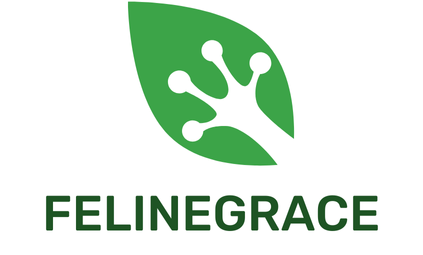Gastric torsion poses a significant risk to deep-chested breeds like the Weimaraner. Understanding how to lessen this threat can not only improve your dog’s health but also enhance their quality of life. Addressing diet, eating habits, and lifestyle changes are key components. Discover the effective strategies that can safeguard your beloved pet from this dangerous condition and ensure a happier, healthier existence. Act now to make informed decisions for your furry friend.
Understanding Gastric Torsion
Gastric torsion, also known as gastric dilatation-volvulus (GDV), is a serious medical condition that primarily affects dogs, particularly those with deep chests. It occurs when the stomach fills with gas and twists on itself, cutting off blood supply and leading to rapid deterioration. This condition is life-threatening and requires immediate veterinary intervention.
A lire également : Mastering Off-Leash Obedience: A Guide to Training Your Jack Russell Terrier
Deep-chested breeds, such as the Weimaraner, are at a higher risk for gastric torsion due to their unique body structure. The deep chest allows the stomach more room to move, increasing the likelihood of twisting. Other risk factors include rapid eating, consuming large meals, and vigorous exercise immediately after eating.
Symptoms of gastric torsion are often sudden and severe. They include a distended abdomen, unproductive retching, restlessness, and signs of pain such as whining or pacing. If untreated, the consequences can be dire, including shock, damage to internal organs, and even death. Recognising these symptoms and acting quickly can be crucial for the survival of the affected dog.
Cela peut vous intéresser : Mastering Stair Navigation: A Comprehensive Guide to Teaching Your Italian Greyhound Safety on Stairs
Understanding the risk factors and symptoms associated with gastric torsion is essential for pet owners, particularly those with deep-chested breeds like the Weimaraner. By being vigilant, owners can help ensure their pets’ health and well-being.
Prevention Strategies for Gastric Torsion
To safeguard your dog’s health, understanding and implementing effective prevention strategies for gastric torsion is crucial. Although this condition is severe, several measures can significantly reduce the risk.
Firstly, feeding practices play a vital role. Offer smaller, more frequent meals rather than one large meal to prevent the stomach from becoming overly distended. Additionally, using a slow feeder bowl can help manage the pace at which your dog eats, reducing the likelihood of gastric torsion.
Recognising early symptoms is equally important. Promptly identifying signs such as a distended abdomen or unproductive retching can make a life-saving difference. Being vigilant and acting swiftly when these symptoms appear can prevent further complications.
Engaging a veterinarian’s expertise is another key aspect of prevention. Regular check-ups allow for professional guidance tailored to your dog’s specific needs. Veterinarians can provide advice on diet, exercise, and other lifestyle factors that influence dog health.
Furthermore, consider prophylactic gastropexy for high-risk breeds. This surgical procedure secures the stomach, preventing it from twisting. By combining these strategies, you can effectively minimise the risk of gastric torsion, ensuring your dog’s well-being.
Dietary Recommendations
To effectively minimise the risk of gastric torsion, implementing specific dog diet strategies is essential. Understanding the feeding practices can significantly contribute to your dog’s health.
Recommended Feeding Practices
Adopting appropriate feeding practices is crucial. Offering multiple small meals throughout the day instead of one large meal can help prevent the stomach from becoming overly distended. This approach not only aids digestion but also reduces the likelihood of gastric torsion.
Safe Food Choices
Choosing the right food is another vital aspect of a preventive dog diet. Opt for easily digestible foods that do not cause excessive gas or bloating. High-quality, balanced diets with appropriate nutrients support overall dog health and minimise the risk of stomach issues.
Feeding Schedule Adjustments
Adjusting the feeding schedule is important for gastric torsion prevention. Ensure that meals are given at least an hour before or after exercise to avoid complications. This timing allows the stomach to settle and reduces the risk of twisting. By aligning meal times with your dog’s activity levels, you can further protect against gastric torsion.
Lifestyle Modifications
Implementing lifestyle changes can significantly reduce the gastric torsion risk for your dog. Understanding how daily activities impact your pet’s health is crucial for prevention.
Impact of Exercise on Gastric Torsion Risk
Exercise plays a pivotal role in managing your dog’s health, but it must be approached cautiously. Vigorous activity immediately before or after meals can increase the gastric torsion risk. To mitigate this, schedule exercise sessions at least an hour before or after feeding. This timing allows the stomach to settle, reducing the likelihood of twisting.
Safe Activities for Deep-Chested Breeds
For deep-chested breeds, choosing appropriate activities is essential. Opt for moderate exercises like leisurely walks or gentle play, which maintain fitness without overexerting the dog. Avoid high-intensity activities that can lead to rapid breathing and stomach expansion, both of which contribute to gastric torsion risk.
Importance of a Calm Environment During Meals
Creating a calm environment during meal times is another effective lifestyle change. Stressful surroundings can cause dogs to eat too quickly, increasing the risk of gastric torsion. Ensure that mealtime is relaxed, with minimal distractions, allowing your dog to eat at a comfortable pace. This simple modification can greatly enhance your dog’s overall well-being.
Regular Veterinary Check-ups
Consistent veterinary care is indispensable for maintaining optimal dog health and preventing serious conditions like gastric torsion. Regular check-ups enable veterinarians to monitor your dog’s overall well-being and detect potential issues early.
During these visits, discussing specific concerns about gastric torsion with your veterinarian is crucial. They can provide tailored advice on diet, exercise, and lifestyle modifications that suit your dog’s needs. Additionally, they can guide you on recognising early symptoms, such as a distended abdomen or unproductive retching, which are critical for prompt intervention.
Early detection is key in managing gastric torsion effectively. Regular veterinary visits facilitate early intervention strategies, allowing for timely medical or surgical treatment if necessary. Veterinarians can also assess whether preventive procedures, like prophylactic gastropexy, are advisable for high-risk breeds.
Veterinary care is not just about addressing immediate health concerns but also about establishing a long-term health plan for your dog. By maintaining a schedule of regular check-ups, you ensure that your pet receives comprehensive care, reducing the risk of life-threatening conditions like gastric torsion. This proactive approach can significantly enhance your dog’s quality of life.
Expert Insights and Interviews
Delving into veterinary insights offers invaluable guidance on gastric torsion prevention. Expert interviews with veterinarians reveal practical strategies and recommendations to safeguard dog health.
Expert Opinions on Prevention
Veterinary professionals emphasize the importance of a holistic approach. They recommend combining dietary adjustments, lifestyle modifications, and regular veterinary check-ups. These strategies collectively minimize the risk of gastric torsion.
Case Studies of Successful Prevention
Several case studies highlight the effectiveness of these prevention strategies. One notable example involves a Weimaraner owner who implemented small, frequent meals and scheduled exercise sessions well apart from feeding times. This approach significantly reduced the dog’s gastric torsion risk, as confirmed by regular veterinary assessments.
Veterinary Recommendations
Leading veterinarians advise pet owners to remain vigilant for early symptoms like unproductive retching and a distended abdomen. Prompt action can be life-saving. Additionally, they suggest considering prophylactic gastropexy for high-risk breeds, a preventive surgical procedure that anchors the stomach to the abdominal wall, preventing twisting.
By integrating these dog health strategies into daily routines, pet owners can effectively protect their dogs from the life-threatening consequences of gastric torsion.
Resources and Support for Dog Owners
Navigating the complexities of gastric torsion can be daunting for any dog owner. Fortunately, there are numerous dog owner resources available to provide guidance and support. Access to reputable online platforms is invaluable. Websites such as the American Kennel Club and Veterinary Partner offer comprehensive gastric torsion information and advice tailored to different breeds, including those with deep chests.
Engaging with support networks is equally beneficial. Online forums like Dogster and Reddit’s r/dogs community provide a space for dog owners to share experiences and learn from others who have faced similar challenges. These platforms often host discussions on prevention strategies and offer peer support, which can be reassuring for those dealing with gastric torsion concerns.
Educational materials are essential for understanding the condition. Many veterinary schools and animal health organisations provide detailed guides and articles about gastric torsion. These resources cover everything from recognising symptoms to implementing preventive measures. They are particularly useful for owners of deep-chested breeds, who are at a higher risk.
By leveraging these resources, dog owners can build a robust support system, ensuring they are well-equipped to care for their pets’ health and well-being.
















